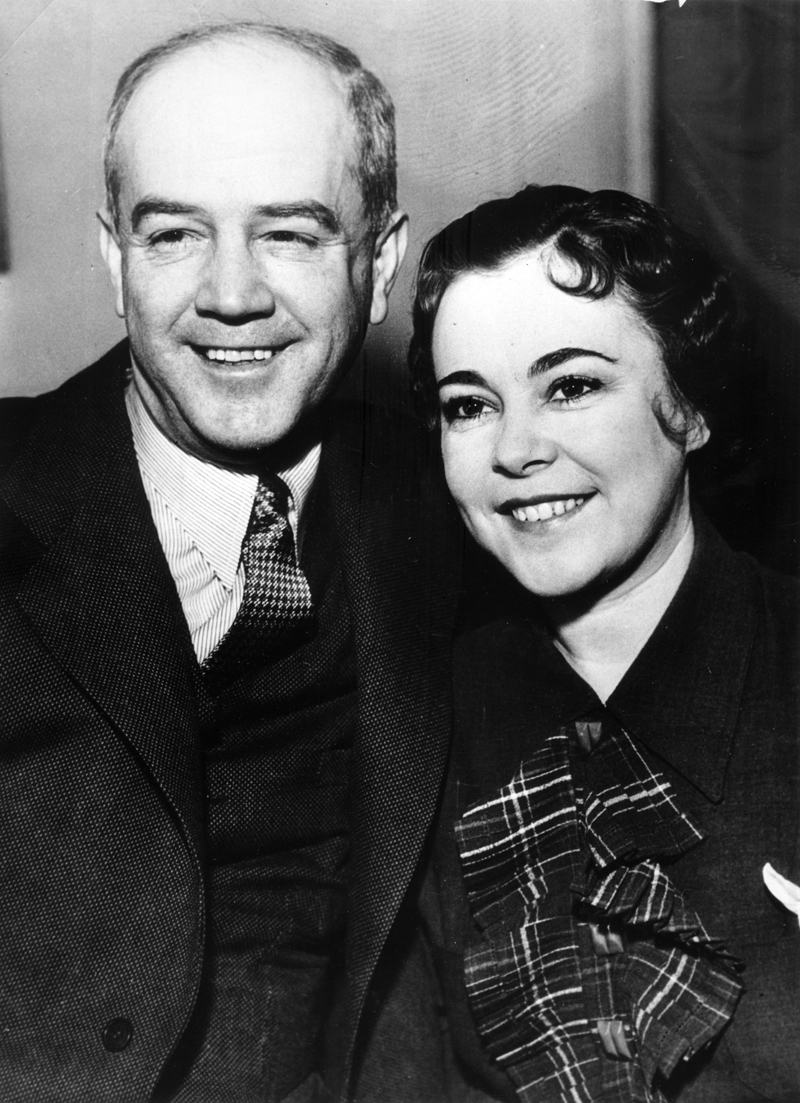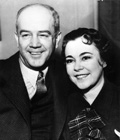|
|
Death from the Sky Over Newhall – Times Two.
Pair of commercial airliners crash within three weeks, leaving 17 dead.
By Alan Pollack, M.D.
Heritage Junction Dispatch, March-April 2012
|
Many times, while walking in my neighborhood in Newhall, I can't help but notice jet airliners flying overhead. Like it or not, the SCV lies beneath a major flight path into Burbank's Bob Hope Airport. This path takes passenger-filled airplanes just west of the Newhall Pass before passing into the San Fernando Valley, where they bank leftward over Chatsworth to land to the east on the airport's Runway 8. While you hope and pray it would never happen, once or twice I have sat in my backyard overlooking the Santa Susana Mountains beyond Interstate 5, wondering if I would ever have to witness the horror of one of these aircraft failing to clear the rugged peaks that separate the two valleys. It turns out, in the mid-1930s, that very scenario played out not once but twice over our local mountains within a three-week period. United Air Lines Flight 34
We begin on the evening of Dec. 27, 1936. United Air Lines Flight 34, a Boeing Model 247-D, was flying a scheduled run from Oakland to Union Air Terminal (now Bob Hope Airport). Pilot Edwin W. Blom and his co-pilot, Robert J. McLean, first made a stop in San Francisco before taking off at 5:30 p.m. to complete the journey to Burbank. On approach to Burbank at 7:36 p.m., the control tower asked for the plane's location. The copilot made one last transmission, stating, "Just a minute," before contact was lost with Flight 34. Nothing was heard from the aircraft throughout the night. At 10 a.m. the following day, wreckage of the aircraft was spotted at the head of Rice Canyon near the top of Oat Mountain. After conducting an investigation, the Accident Board of the Bureau of Air Commerce concluded that the plane struck the ground at an altitude of 2,620 feet while banking to the right. The wings were sheared off by trees, and the fuselage traveled another 300 feet before hitting the wall of a narrow canyon and sliding back down to the bottom. It was a cloudy, rainy night in Southern California. The Board stated its opinion that the accident "was an error on the part of the pilot for attempting to fly through the Newhall Pass at an altitude lower than the surrounding mountains without first determining by radio the existing weather." All 12 persons on board the airplane died in the crash, including H.S.Teague, a 28-year-old cartoonist at Walt Disney Studios, and Edward F. Ford, a Standard Oil Co. employee and son of the president of the Grace Line Steamship Company. Ford had just gotten married six months prior to the crash. It was reported that a number of local citizens from the SCV braved the soaking rainfall and hiked up the rugged terrain to find the wreckage and aid in the removal of the bodies of the unfortunate passengers. Western Air Express Flight 7 Less than three weeks later, on Jan. 12, 1937, adverse weather conditions brought down Western Air Express Flight 7 four miles southeast of Newhall, when the Boeing Model 247-B crashed into the San Gabriel Mountains near the summit of Los Pinetos Peak, about 1,600 feet above the Walker Ranch in Placerita Canyon. Manned by pilot William W. Lewis and co-pilot Clifford P. Owens, Flight 7 began its trek in Salt Lake City, en route to San Diego, with intermediate stops to be made at Las Vegas, Burbank and Long Beach. After being delayed for 23 minutes in Las Vegas due to the weather conditions in Southern California, the plane was cleared to proceed to the airport in Burbank. The pilots lost sight of the ground as they flew over Acton, due to heavy overcast conditions. As the plane slowly descended toward Burbank, it became engulfed in the cloud cover and experienced extremely turbulent air conditions, making navigation difficult with instrument flying. At 10:57 a.m., the pilot attempted unsuccessfully to get directional radio signals from the Union Air Terminal in Burbank. When he finally did obtain the signals, he realized the airplane had veered off course to the east and over the higher mountain peaks east of the Newhall Pass. As he immediately started a turn to get back on course, he noticed a dismaying sight out the cockpit window: To his left he saw two bushes through the window. Bad sign for an aircraft that was supposed to be high up in the air over the mountains.
Realizing a crash was imminent, at 11:15 a.m., Pilot Lewis cut down the engines to lessen the impact and attempted to "pancake" the aircraft on to the hillside. According to the report of the Accident Board of the Bureau of Air Commerce: "The airplane first struck the ground with the left wing tip. It then skidded along the side of the mountain in a curved path for approximately 125 feet, finally coming to rest headed in the opposite direction from which it struck. The point of collision was at an elevation of 3m550 feet near the summit of Los Pinetos, the highest mountain in the immediate vicinity." The Accident Board further concluded "that the probable cause of this accident was error on the part of the pilot for descending to a dangerously low altitude without positive knowledge of his position." The Western Air Express crash took the lives of one crew member (co-pilot Owens) and four passengers, including noted international adventurer and filmmaker Martin Johnson. Johnson's wife, Osa, survived the crash with back and neck injuries. She later served as technical consultant on the 1939 movie classic "Stanley and Livingston." One of the surviving passengers, Arthur Robinson, 25, actually hiked down the mountain into Sylmar where he ran into a search team from the Olive View Sanitarium. Robinson later recalled: "Suddenly the plane began to drop - drop. Then there was a terrible crash. My seat belt kept me in my seat. I didn't lose consciousness, but my leg and side hurt. I guess I was about the only one that wasn't knocked out." Another notable survivor was Robert Andersen, who later popularized the famous Pea Soup Andersen's restaurant, founded in Buellton by his parents. The Newhall Signal reported that rain throughout the day hampered rescue operations. It was not until after midnight that the passengers were brought down the south side of the mountain with the use of mule teams and buckboard, and a tractor. The wreck was said to be plainly visible from Newhall. Longtime Placerita Canyon resident George Starbuck recently discussed his personal recollections of the Western Air Express crash with Leon Worden: "Three of my uncles were the first ones to the scene, Ray, Charles and Edward Walker. They heard the plane go over and the sound of the crash. It was directly south of the upper house in Placerita. My grandfather drove down to Newhall to inform the sheriff and rescue crew. From what I remember, both of the Johnsons were on board; Osa Johnson survived." Probably the most famous aviation accident in Santa Clarita history was not an airplane crash, but the helicopter accident that took the life of actor Vic Morrow and two child actors during the filming of the John Landis-directed movie, "The Twilight Zone" at Indian Dunes along the Santa Clara River on July 22, 1982. But that's a whole other article, folks.
Alan Pollack, M.D., is president of the Santa Clarita Valley Historical Society. |
News Reports
Moving the Injured
Victim Transported
Osa Johnson Rescued
Martin Johnson's Body
Victim Recovery
Body Removal
Same Plane 1933
Martin Johnson
|
The site owner makes no assertions as to ownership of any original copyrights to digitized images. However, these images are intended for Personal or Research use only. Any other kind of use, including but not limited to commercial or scholarly publication in any medium or format, public exhibition, or use online or in a web site, may be subject to additional restrictions including but not limited to the copyrights held by parties other than the site owner. USERS ARE SOLELY RESPONSIBLE for determining the existence of such rights and for obtaining any permissions and/or paying associated fees necessary for the proposed use.













